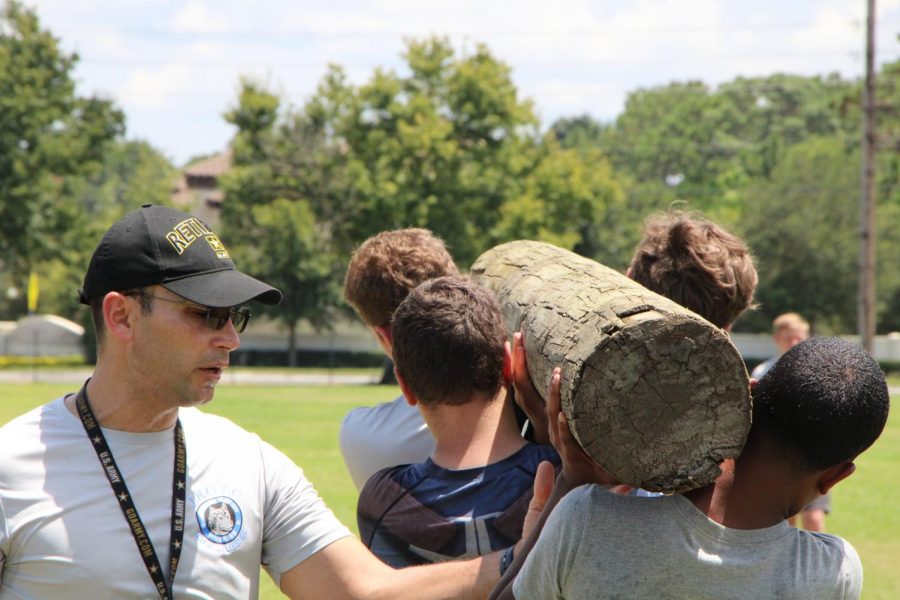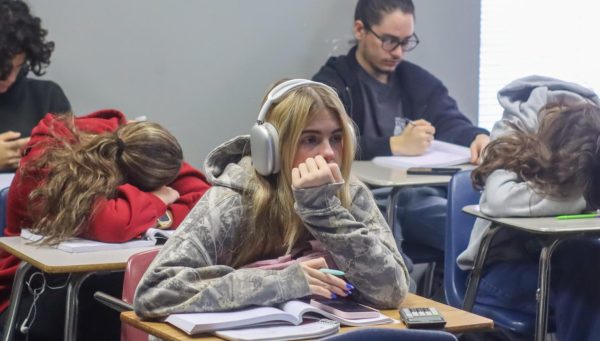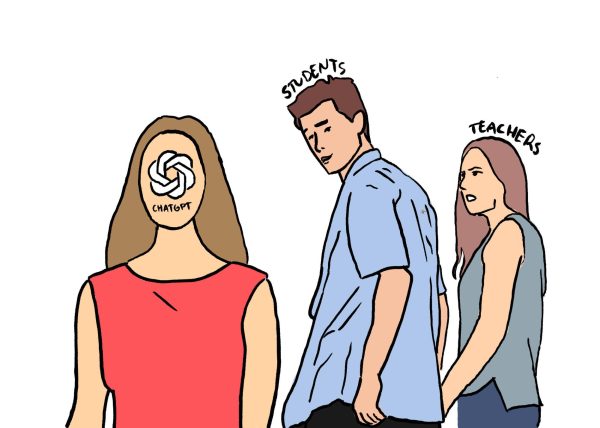‘Never forget where you come from’
JROTC program faces big changes with new instructors, new direction
photo by Alexis Madlang
JROTC cadets carry a log as part of their workouts held on Thursdays and Fridays. Chief Collazo works out with his cadets and helps them throughout.
JROTC cadets file into Chief Enrius Collazo’s room for personal training, normally a job for two instructors, but today it is just Collazo and a substitute.
This was Collazo’s reality for 13 months before 1st Sgt. Louis Strickland started Aug. 23.
Before Strickland joined, Collazo ran the program alone. Despite having a heavy workload teaching 100 plus students, he made it through the year with the help of administration.
“Normally, we’re a team of two so we were running at 50 percent strength,” Collazo said.
When Strickland was looking for jobs, he knew he wanted a change from Georgia and Hagerty caught his eye.
“Hagerty is an outstanding school and when I visited, I felt like I could benefit the program,” Strickland said.
Being in the military is a demanding commitment, and transitioning from being in the Army to instructing high school students can be tough. Similar to Collazo, Strickland has experience working with young adults. However, his experience working with universities like Texas A&M has prepared him for the change.
“Patience is the biggest thing,” Strickland, who previously served as an infantryman, scout and drill sergeant in the Army, said. “You’re not going to learn the same way or speed as someone who is already in tune with what they want to do as far as their future is concerned.”
Collazo joined the Army at 17 and served for 23 years. Because the average age for Army recruits is 17-21, it gave Collazo the chance to train and develop soldiers, but it was still not the same as high school.
“I can’t forget that my cadets are not soldiers,” Collazo said. “So I have to adjust my approach and make sure that we work together as a team since this is a student-led program.”
When instructing a lesson, both Strickland and Collazo want their students to take away something from the experience. For Strickland, it is a priority for his students to gain valuable life skills through his teaching.
Collazo recalls that he learned how to train and develop other soldiers in the Army. Along the way, he taught teamwork, life and leadership skills needed to be successful. Collazo prioritizes college amongst the cadets in the program. Based on different students’ goals, Collazo tries to help them as best as he can, keeping in mind that high school can be very challenging.
“We kind of guide them in the right direction to prepare them for life after high school,” Collazo said. “Not to join the service per say but just to be a successful person.”
Collazo sees himself more as a facilitator since JROTC is student-led. He helps his students to make their own decisions as well as to make their own mistakes in order to learn from them. He teaches his cadets, like he did in the Army, that people come first.
“If we can’t take care of our people then how can we accomplish the mission?” Collazo said.
Collazo believes that anything is possible. He was able to serve many different levels of the Army, even all the way up to the Pentagon. Collazo’s journey through the Army has proved to him that anything is possible, and he applies that value to anything that he teaches his cadets.
“Stay humble but stay hungry. That way you can achieve anything you want to achieve,” Collazo said.
Your donation will support the student journalists of Hagerty High School. Your contribution helps us publish six issues of the BluePrint and cover our annual website hosting costs. Thank you so much!









